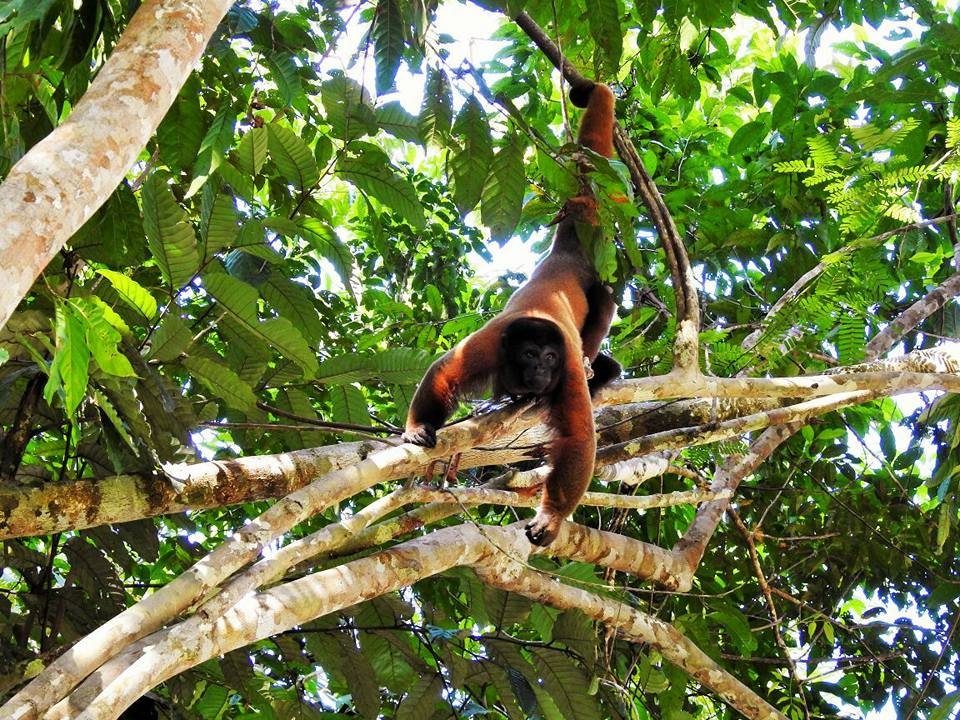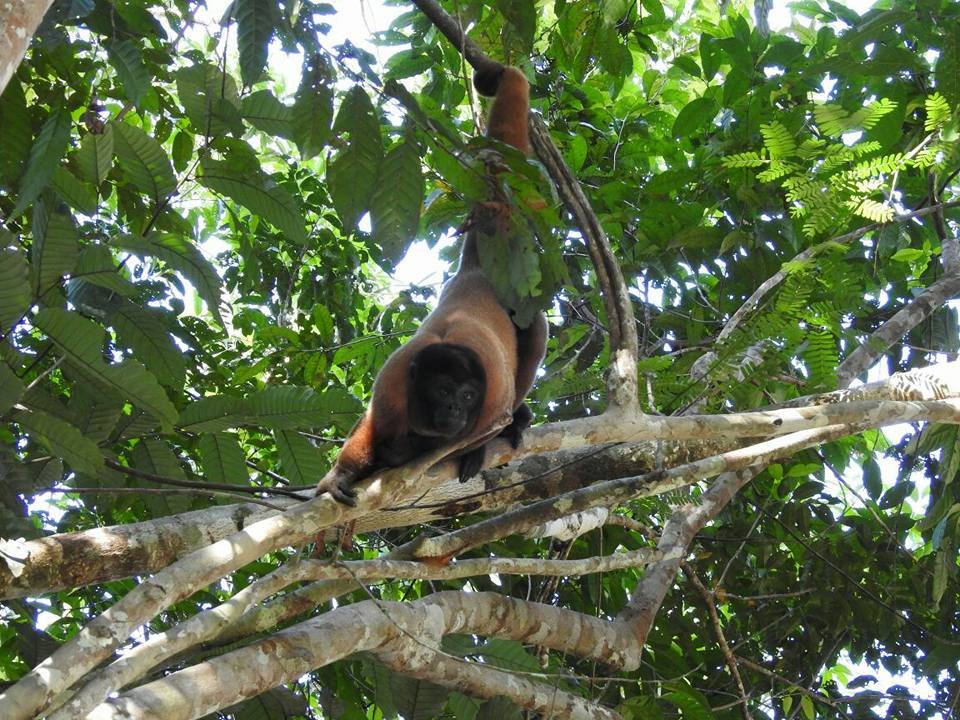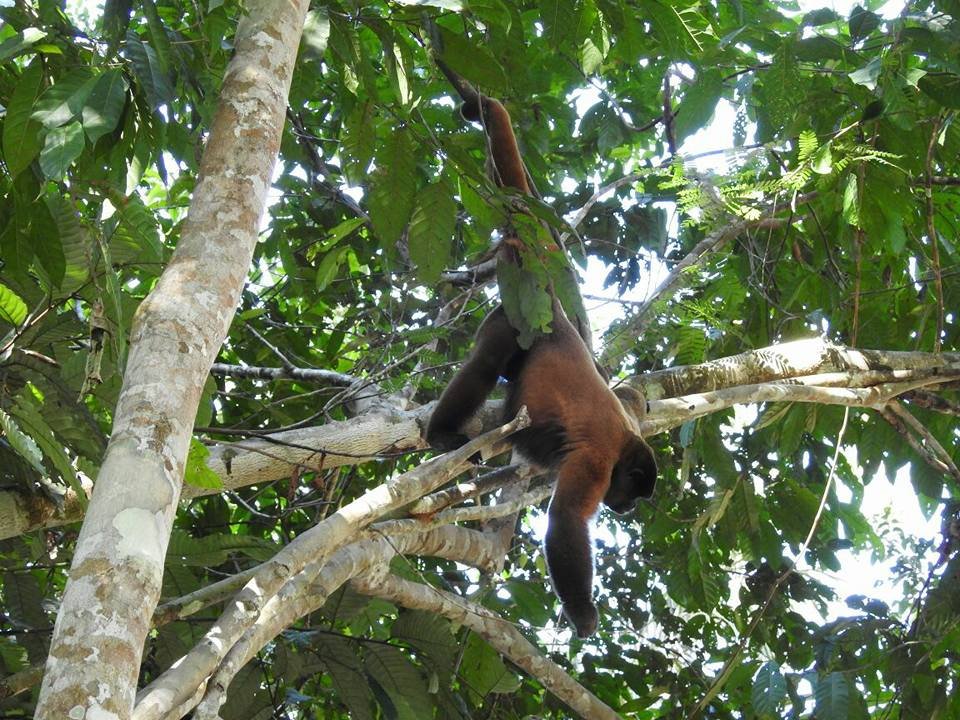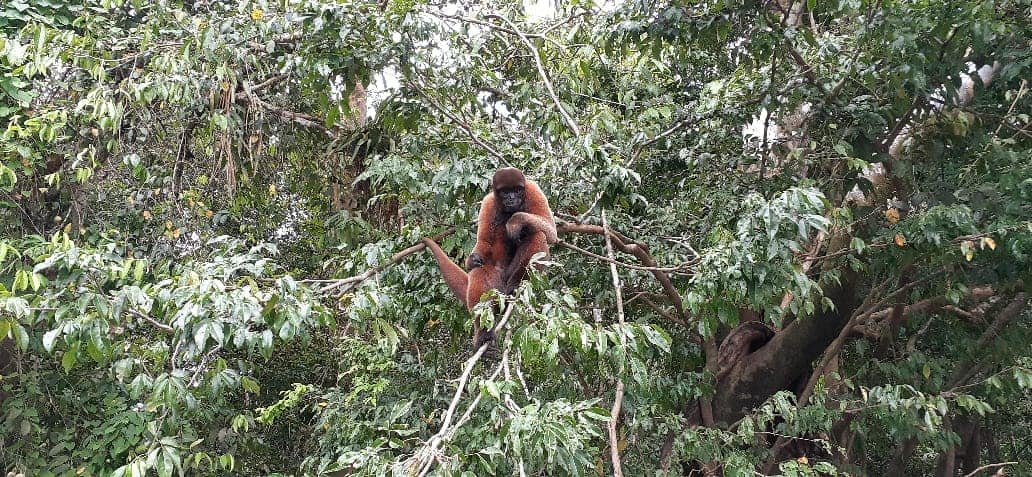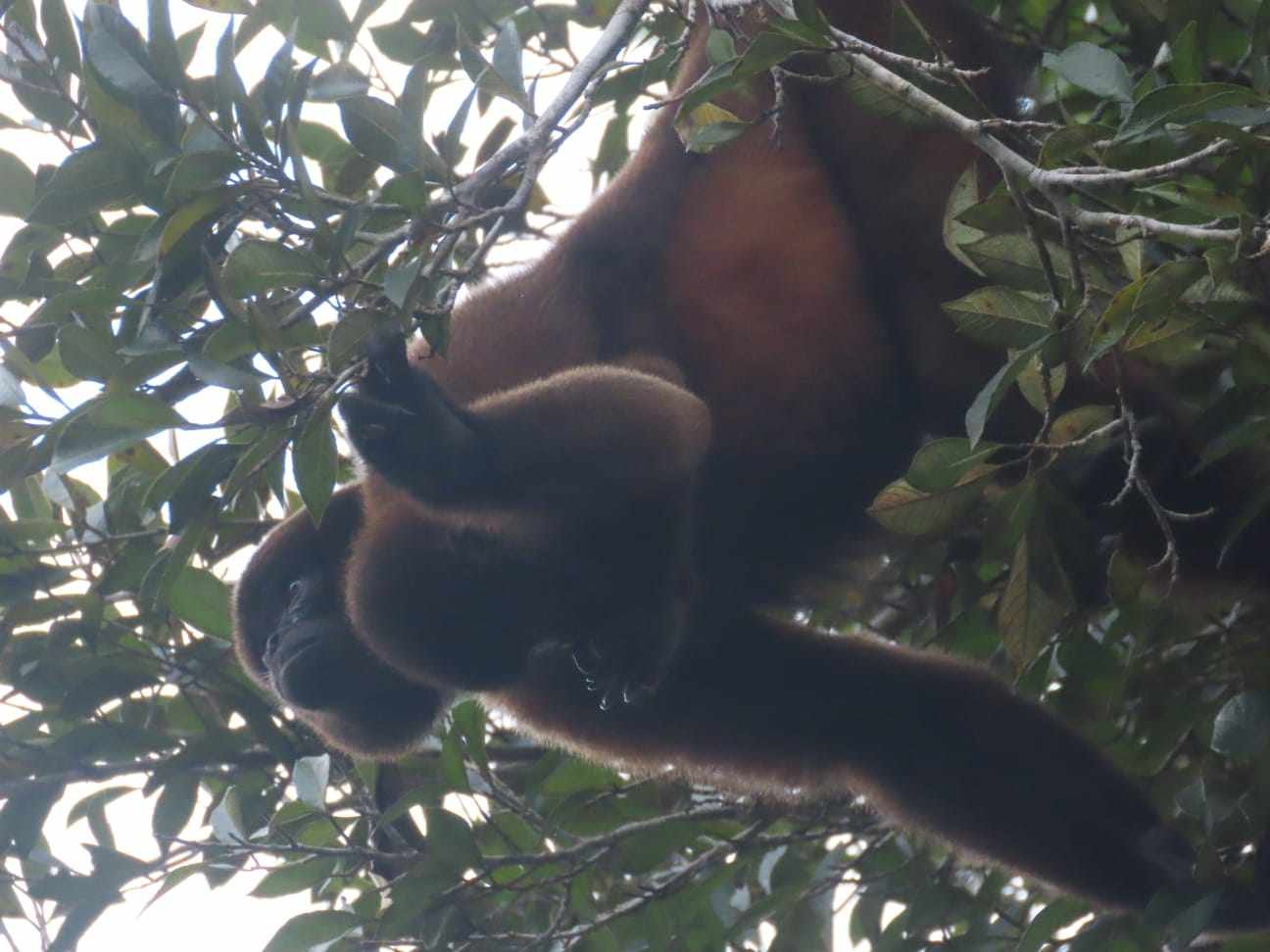Yellow-tailed Woolly Monkey
The Peruvian yellow-tailed woolly monkey is characterized by many different things. Their fur is thick, soft and mahogany colored, as well as , denser and longer than the other species of woolly monkeys. The fur is darker on the upper head and body and lighter around their mouths and bellies. Males have a tuft of golden brown hair around their genitalia. Although this is also present in females, the hair is much shorter. Females can also be identified by their long prominent clitoris. Both males and females have long prehensile tails that develop a yellow coloration at the bottom, as the monkeys age. An adult ranges from about 51-53 cm and weighing approximately 8-11 kg.
This species is the only woolly monkey that is native to Peru. It is one of the largest endemic primates that lives in the cloud forests of the Peruvian Andes, the departments of Amazonas and San Martin. The elevation is about 15 to 27,00 meters above sea level. Their habitat consists of steep ,mountainous, foggy forrest with many gorges and ravines and they can leap up to 50 feet between branches.
Peruvian yellow-tailed woolly monkeys are fruit eating primates. Ripe fruits make up a large part of their diet , especially figs! They also eat flowers and plant matter such as buds and roots and occasionally eat insects, like beetles, ants and mantids. In addition to their normal diet of plants and insects, Peruvian yellow-tails also practice geophagy, meaning they eat soil to help them trace minerals and reduce intestinal parasites.
The monkeys spend equal parts of their day foraging, travel, and engaging in social activities such as grooming and play. They tend to travel and forage for food in the early mornings and late afternoons. They rest when the forrest is hottest during the day. Each night they sleep high in the canopy to avoid predators.
The Peruvian yellow-tailed woolly live in average group sizes of 14-16 individuals ,but can be seen in groups as large as 30. Although the groups are generally large, the females only reproduce about once every three years. It is uncommon to see any aggression amongst the groups. They are quiet and peaceful primarily.
Although the Peruvian yellow-tailed woolly monkeys predators include pumas and large raptors ,such as, eagles , hawks and vultures; Its greatest threat at the moment is illegal hunting for bushmeat and fur trade ,as well as, deforestation.
Woolly Monkey 3.19.24


